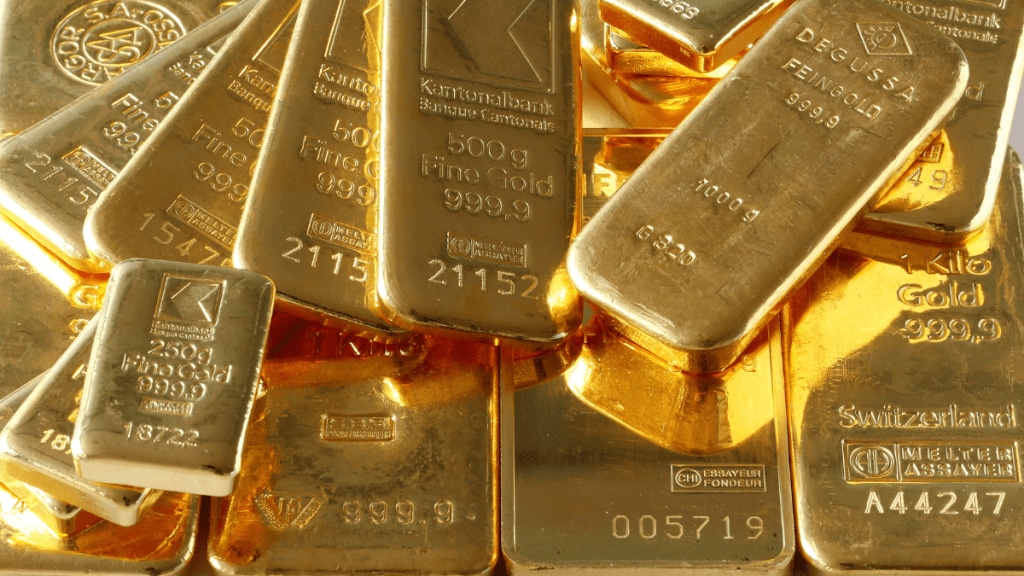By Harish Galipelli
The precious metals market has experienced a historic rally, with gold and silver reaching unprecedented highs fuelled by geopolitical instability, economic uncertainty, and a surge in investor enthusiasm. From steady accumulation to a fear of missing out (FOMO)-driven frenzy, participants ranging from central banks to retail investors have propelled prices to new peaks. This article examines the catalysts behind this surge, its implications for India, and the future trajectory of these metals.
Gold, after consolidating below $2,000 for nearly a decade, skyrocketed to an all-time high of $4,179, a 158% rise since November 2022, triggered by the Russia-Ukraine war. Silver has outperformed with a remarkable 360% increase from its March 2020 low of $11.63 to a high of $53.57. The gold-to-silver ratio, typically between 55 and 75, has surged past 80, reflecting gold’s out-performance and aggressive buying in undervalued silver in coming days.
Catalysts driving the surge
Geopolitical instability: Ongoing conflicts, including the Russia-Ukraine war, West Asian tensions, and US-China trade disputes, have boosted safe-haven demand for gold and silver. Political uncertainty in Europe further amplifies this trend.
Central bank accumulation: As the US dollar’s status as the world’s reserve currency weakens, BRICS nations and others have ramped up gold purchases, with a five-fold increase since the Russia-Ukraine conflict began. Western sanctions and freezing of Russian financial assets have underscored the reliability of physical assets like gold and silver over foreign reserves.
Inflation hedge: Persistent inflation across major economies has made gold an attractive store of value, drawing in funds and investors seeking protection against eroding purchasing power.
US economic challenges: High tariffs, a sluggish job market, inflationary pressures, and risks of government shutdowns have further driven gold prices.
Weak US dollar and ETF inflows: A declining dollar over the past three years, combined with significant inflows into gold and silver exchange-traded funds (ETFs), has created a FOMO-driven market surge.
Silver’s unique drivers: Beyond investment demand, silver benefits from persistent supply deficits and growing industrial demand, particularly in green technologies like solar panels and electric vehicles.
Technological demand for silver: The rise of renewable energy and electronics has increased silver’s industrial appeal, as it is a critical component in photovoltaic cells, batteries, and semiconductors, adding a structural demand layer to its rally.
India’s market dynamics
India, the second-largest gold importer after China, has seen domestic gold prices approach Rs 130,000 per 10 grams and silver hit Rs 189,000 per kilogram, driven by global trends and a depreciating rupee. Gold imports in 2025 are expected to surpass the 723 tons and 744 tons recorded in 2024 and 2023, respectively, fuelled by festive season demand and growing investment interest. Assets under management for gold and silver ETFs have doubled in 2025, with a 50% compound annual growth rate over the past five years. The Reserve Bank of India holds approximately 880 tonnes of gold by FY25, increasing from 653 tonnes in FY20, a rise of over 35% in five years.
Economic impacts
Challenges: Elevated imports are likely to widen India’s current account deficit, straining foreign exchange reserves and weakening the rupee, which could exacerbate inflation. The gems and jewellery export sector faces headwinds from high US tariffs, further impacting trade balances.
Opportunities: Rising precious metal prices are boosting the gold loan market, particularly in rural India, fostering economic activity. Easing import duties could reduce smuggling, channelling transactions through legal avenues and benefitting the economy.
Cultural significance: Gold and silver hold deep cultural value in India, especially during festivals like Diwali and wedding seasons, sustaining demand despite high prices.
Outlook
With gold and silver in an uncharted price territory, further gains are plausible amid ongoing global uncertainties in geopolitics, trade, and economies. Central bank buying laid the foundation for gold’s rally, but recent investor and fund participation suggests sustained momentum. Silver is poised to outperform gold, driven by supply constraints, industrial demand, and a potential mean reversion in the gold-to-silver ratio. A short-term correction of 10-15% is possible due to market volatility or profit-taking. Given the volatility in these markets, investors should adopt a disciplined approach, accumulating gold and silver on price dips to mitigate risks and capitalise on long-term trends.
The surge in gold and silver prices reflects a confluence of global uncertainties, economic shifts, and structural demand factors, with India playing a pivotal role as a major consumer. While challenges like trade deficits and currency depreciation pose risks, opportunities in rural economic growth and legal trade channels offer potential benefits. As the precious metals market navigates this dynamic landscape, strategic accumulation and awareness of global trends will be essential for investors seeking to capitalise on this historic rally.
(The author is the Director and Head of Strategy at ILA Commodities India Pvt Ltd)
Views are personal

